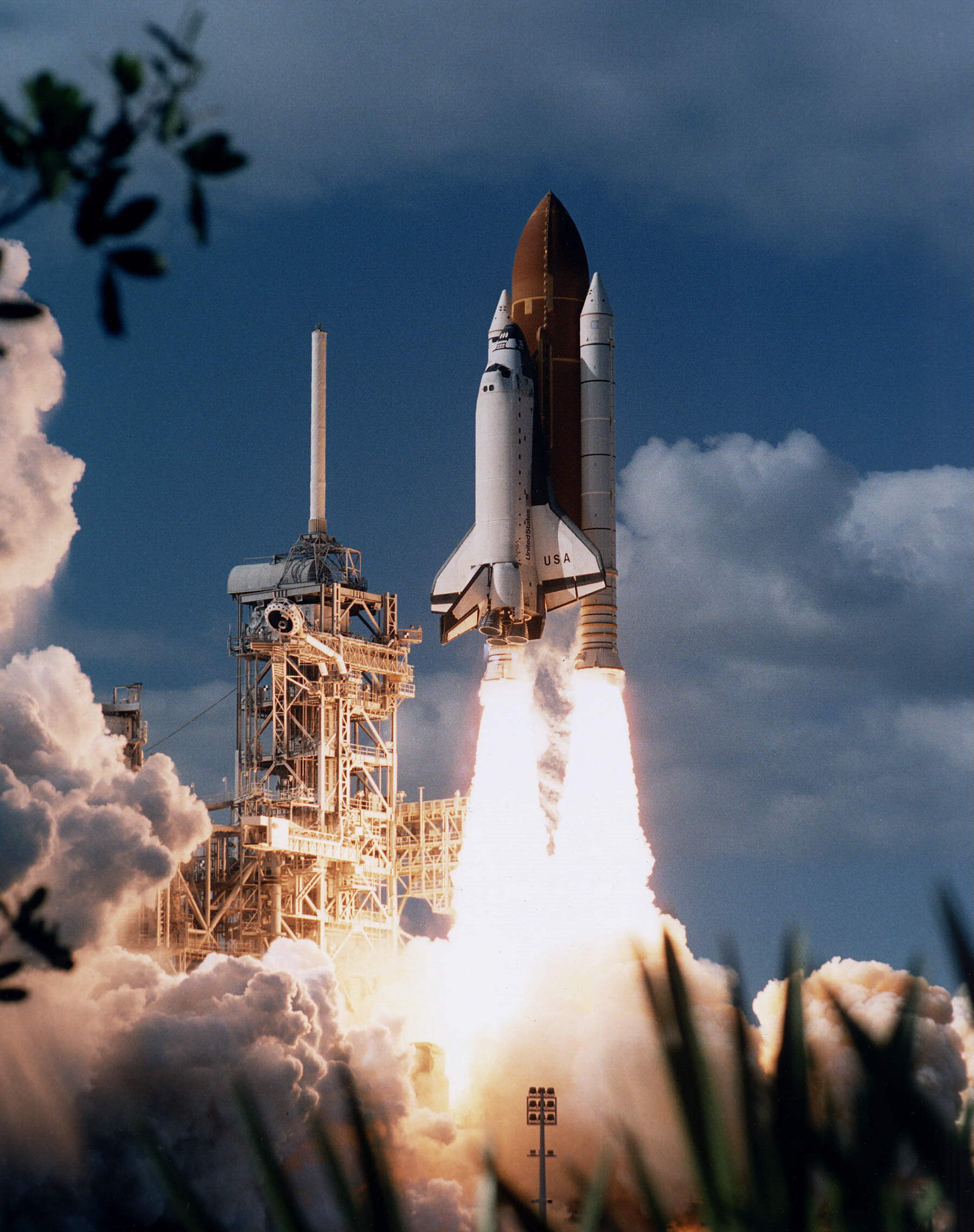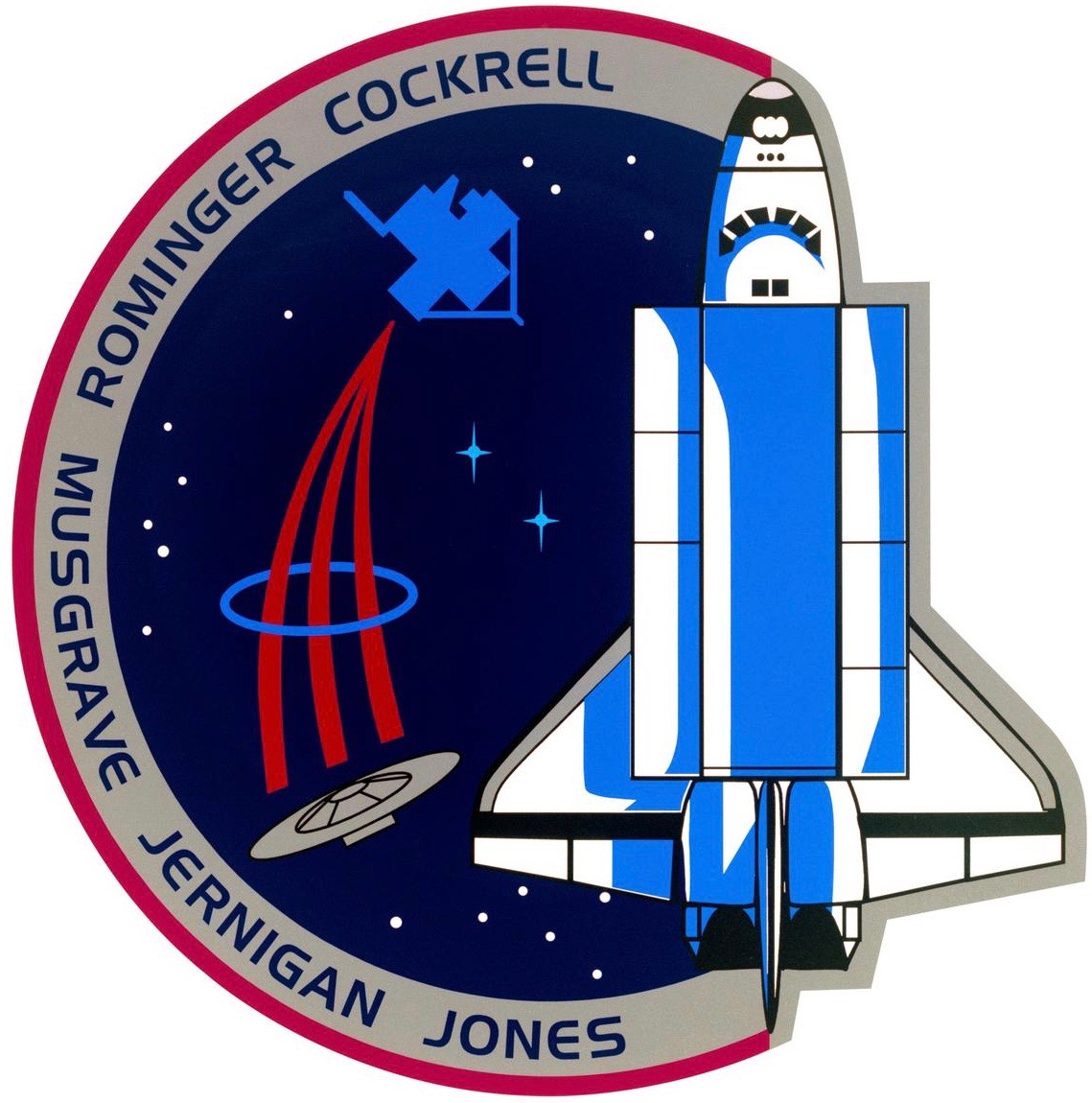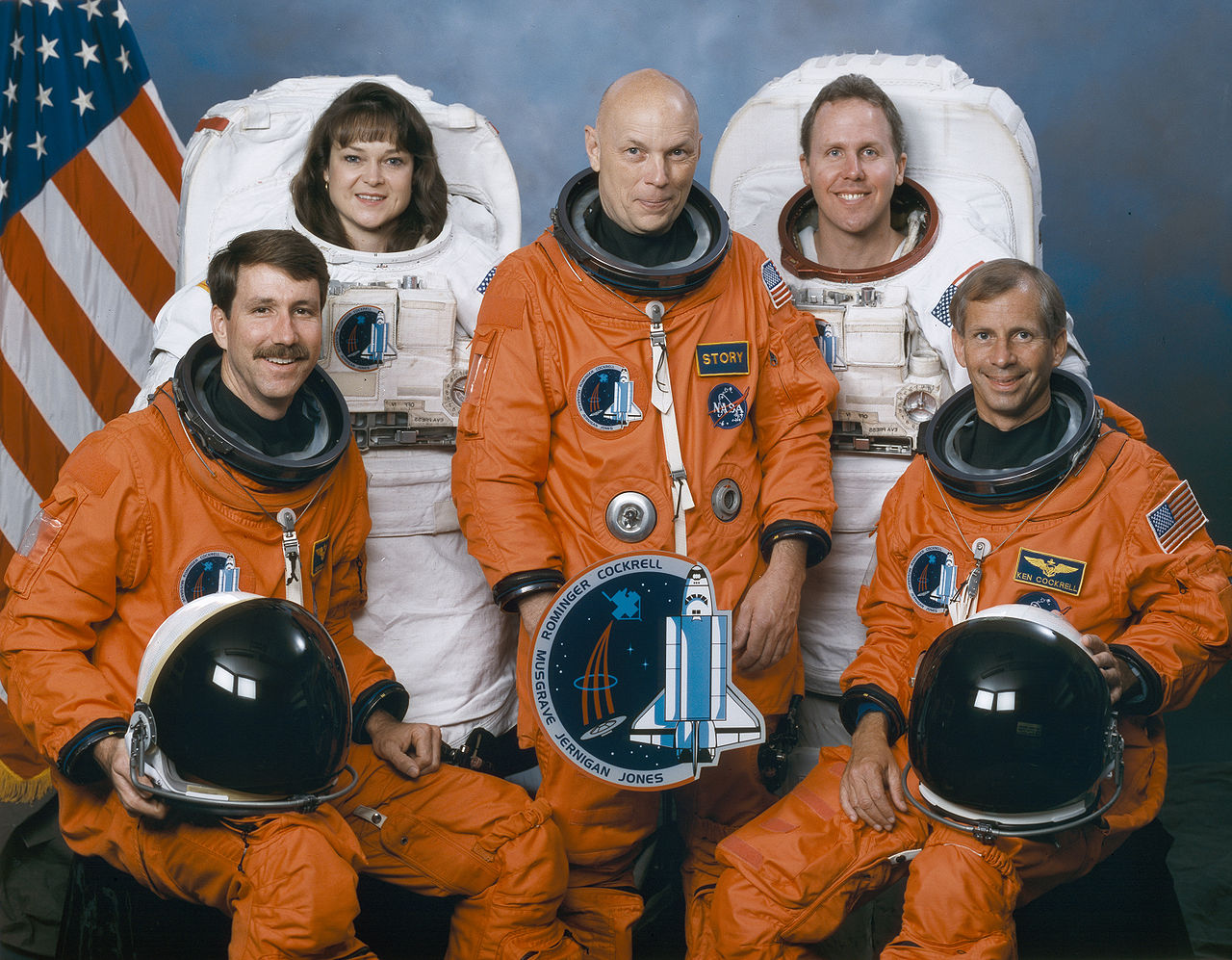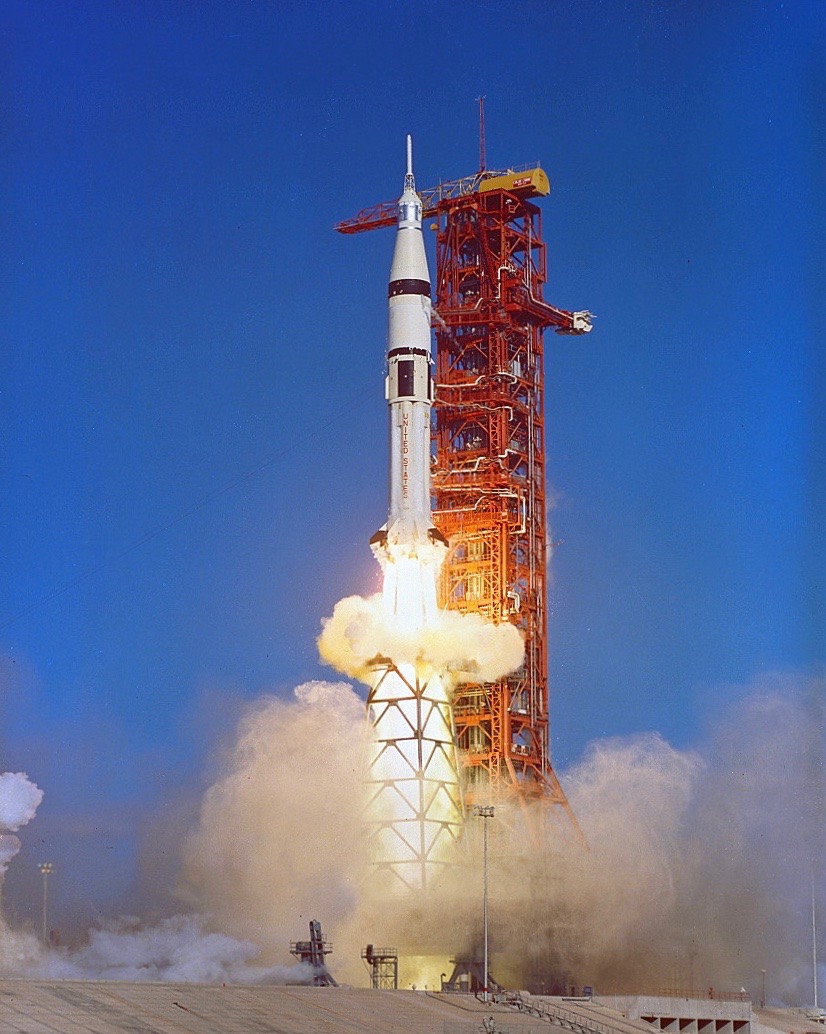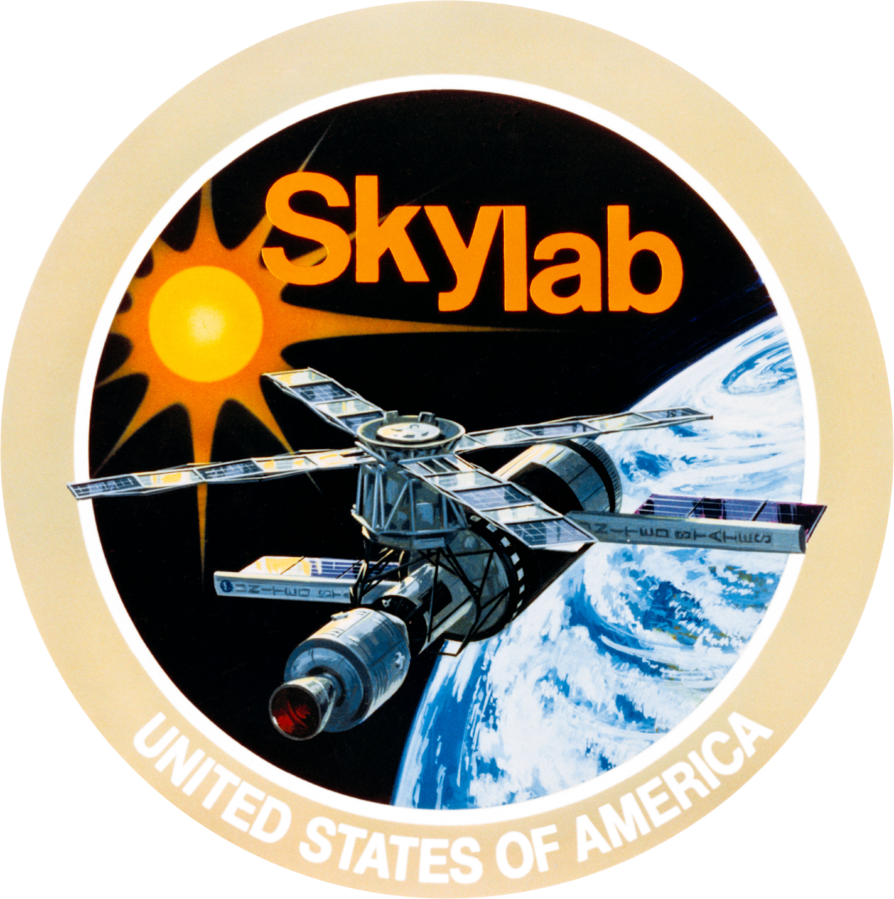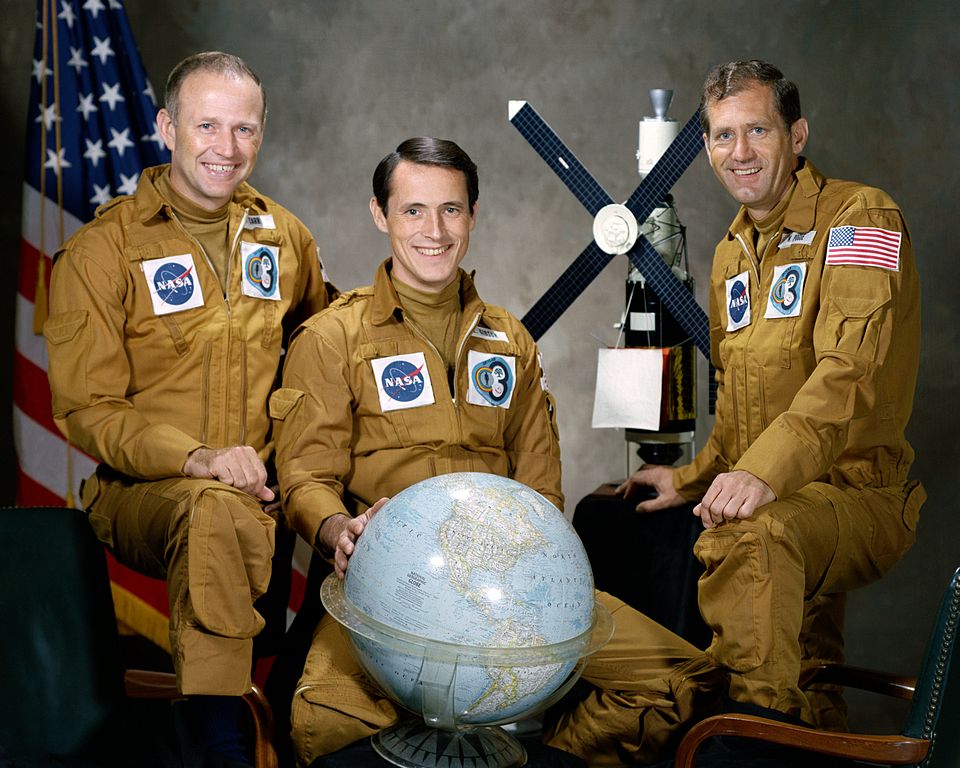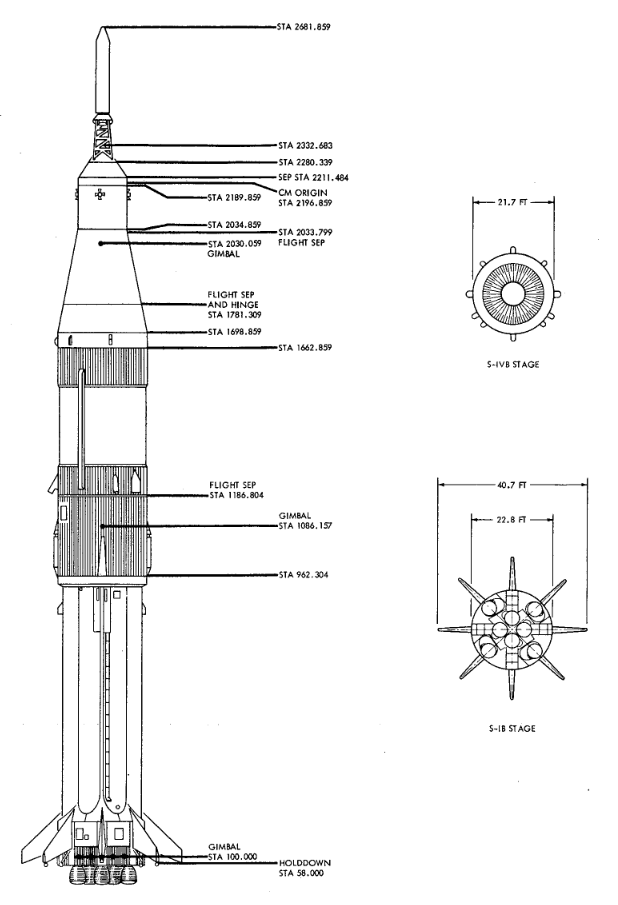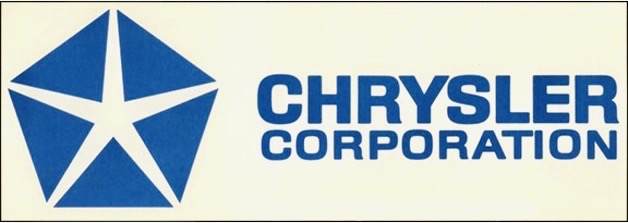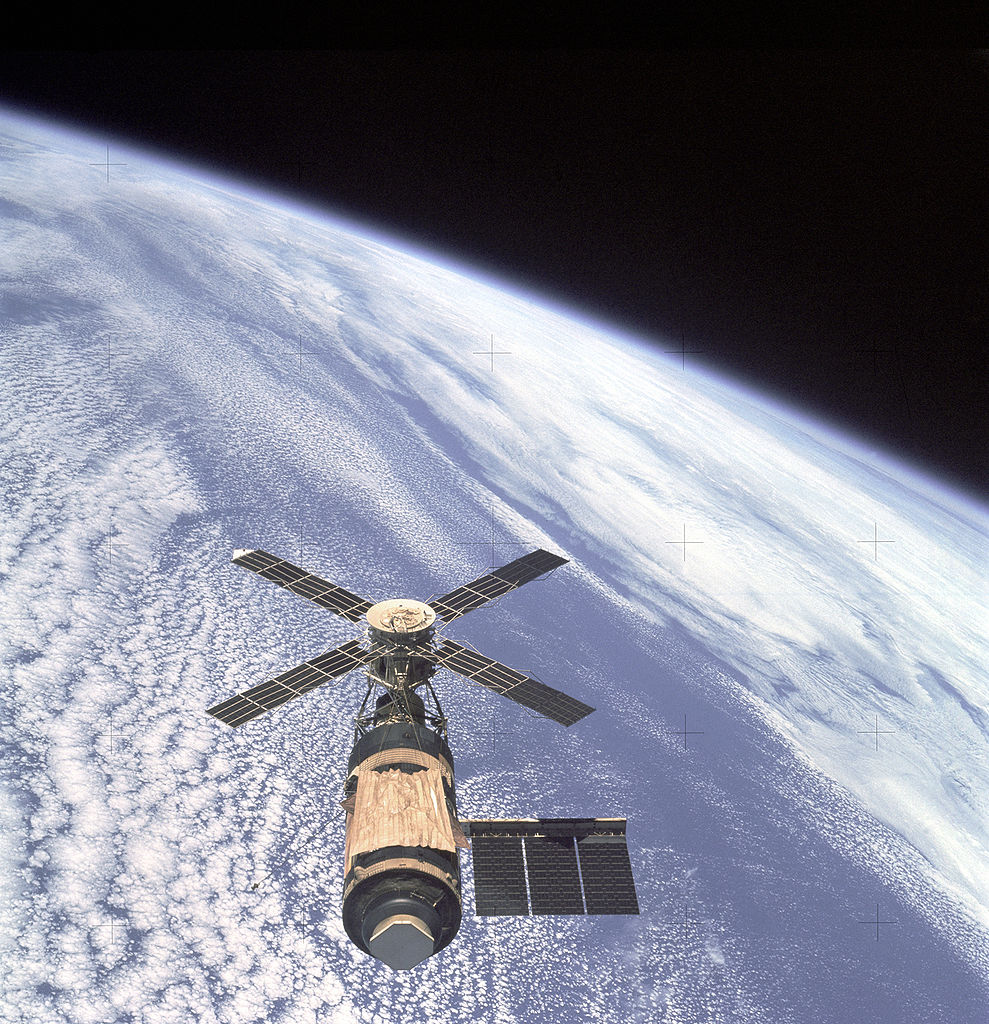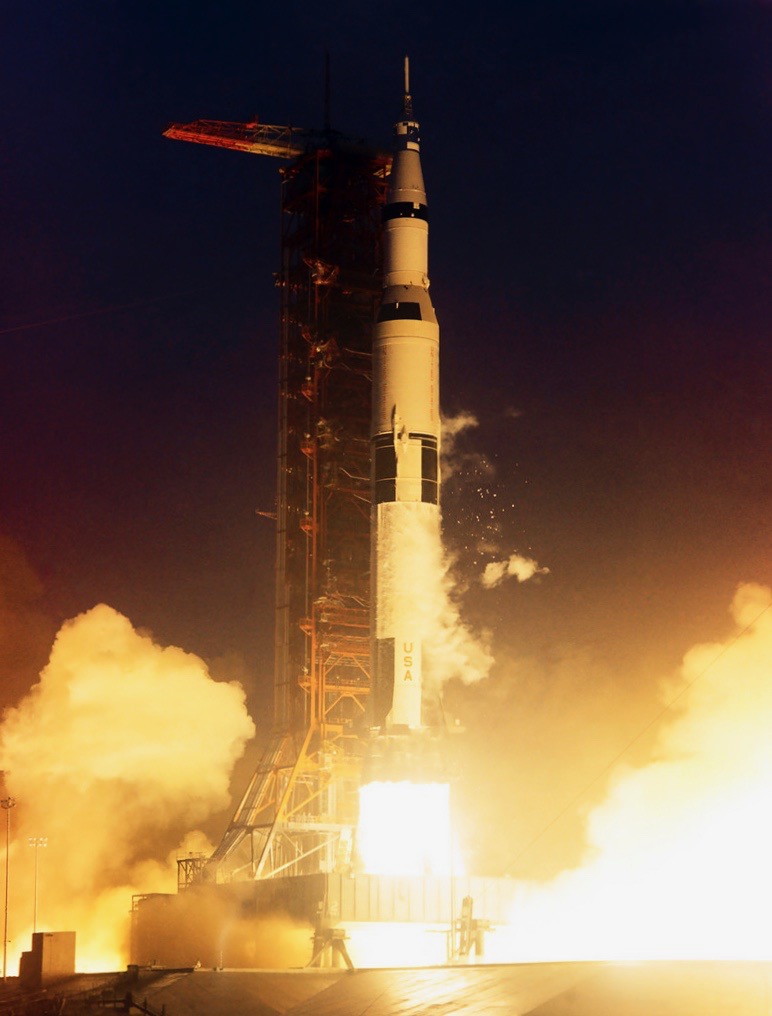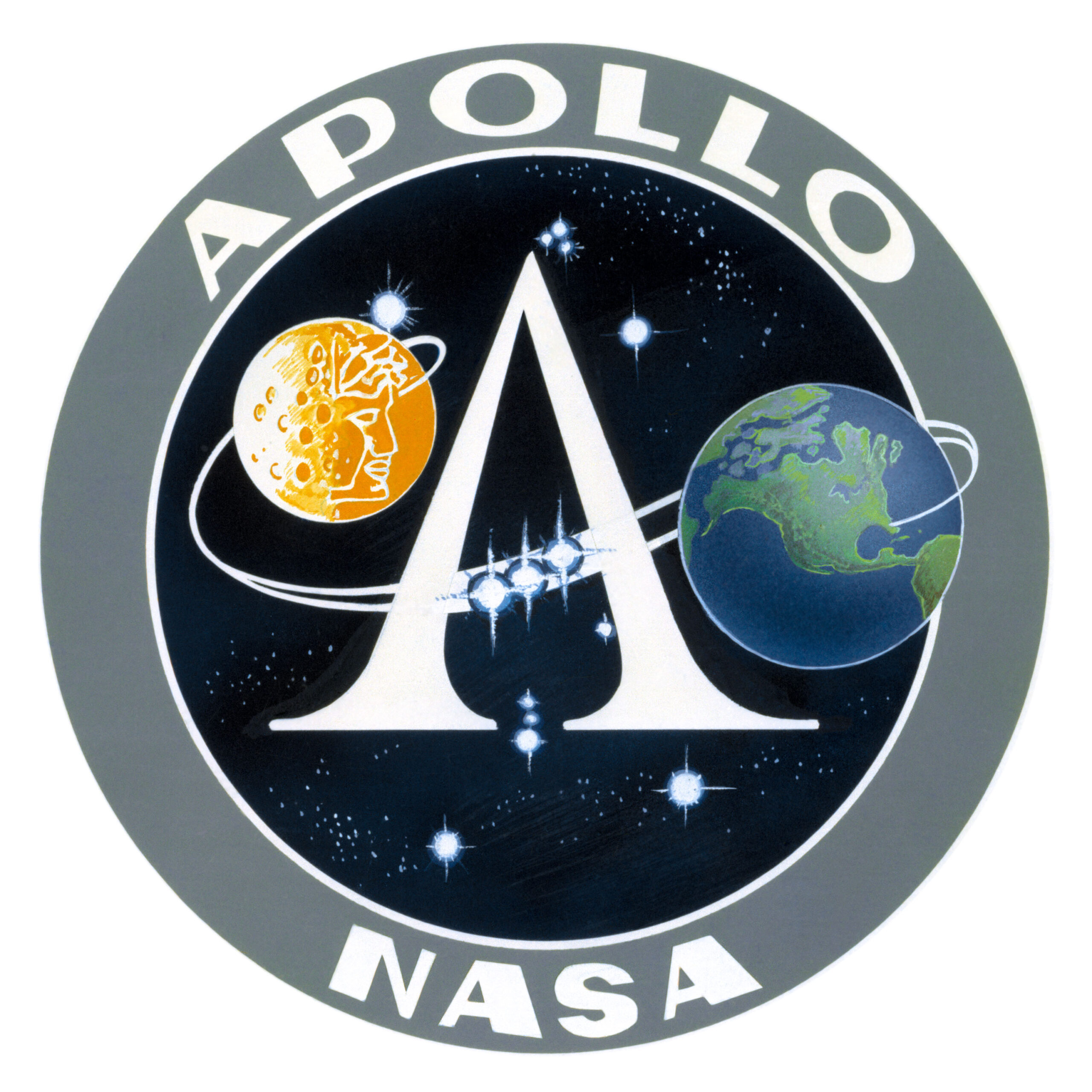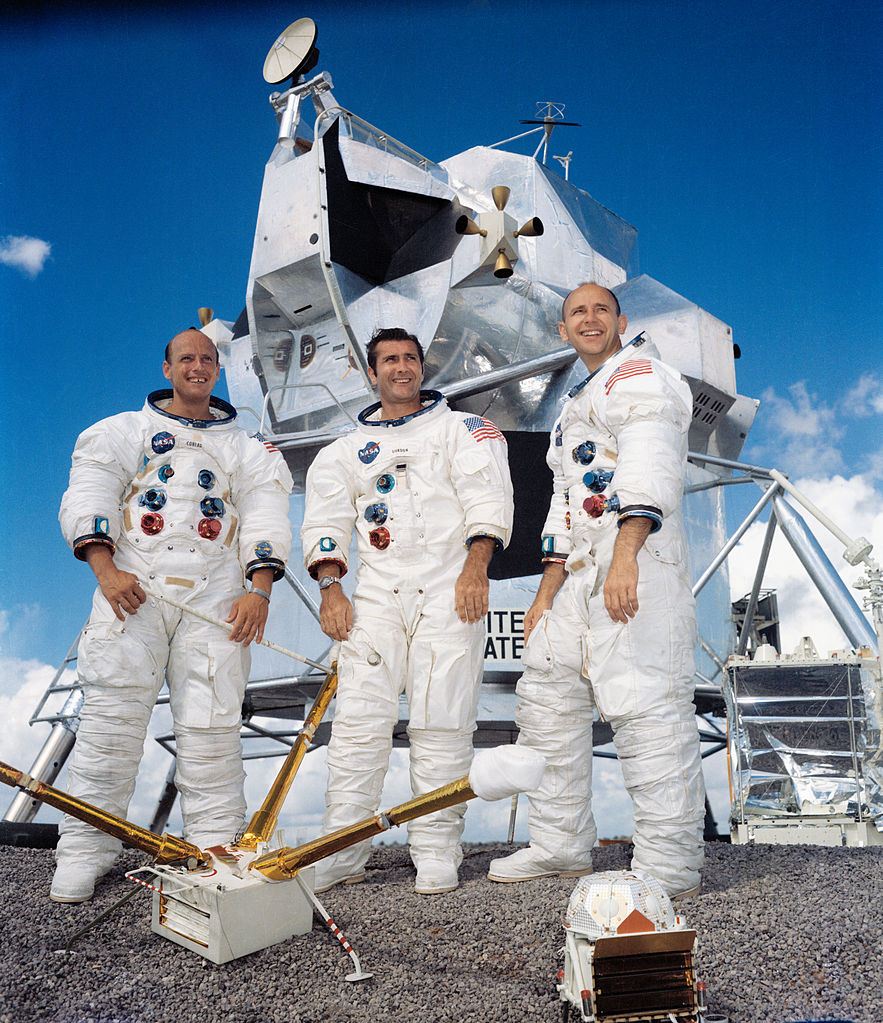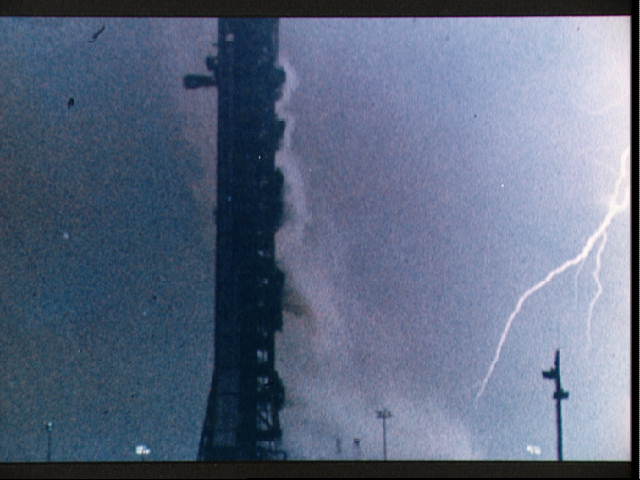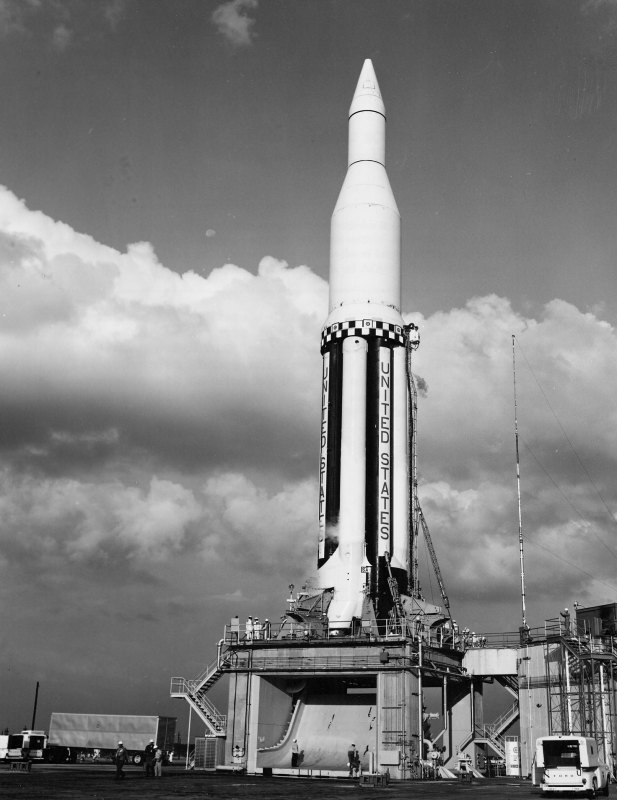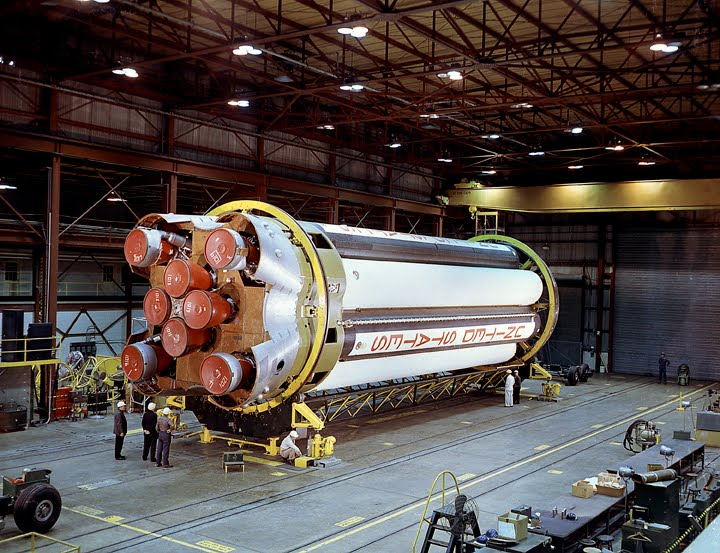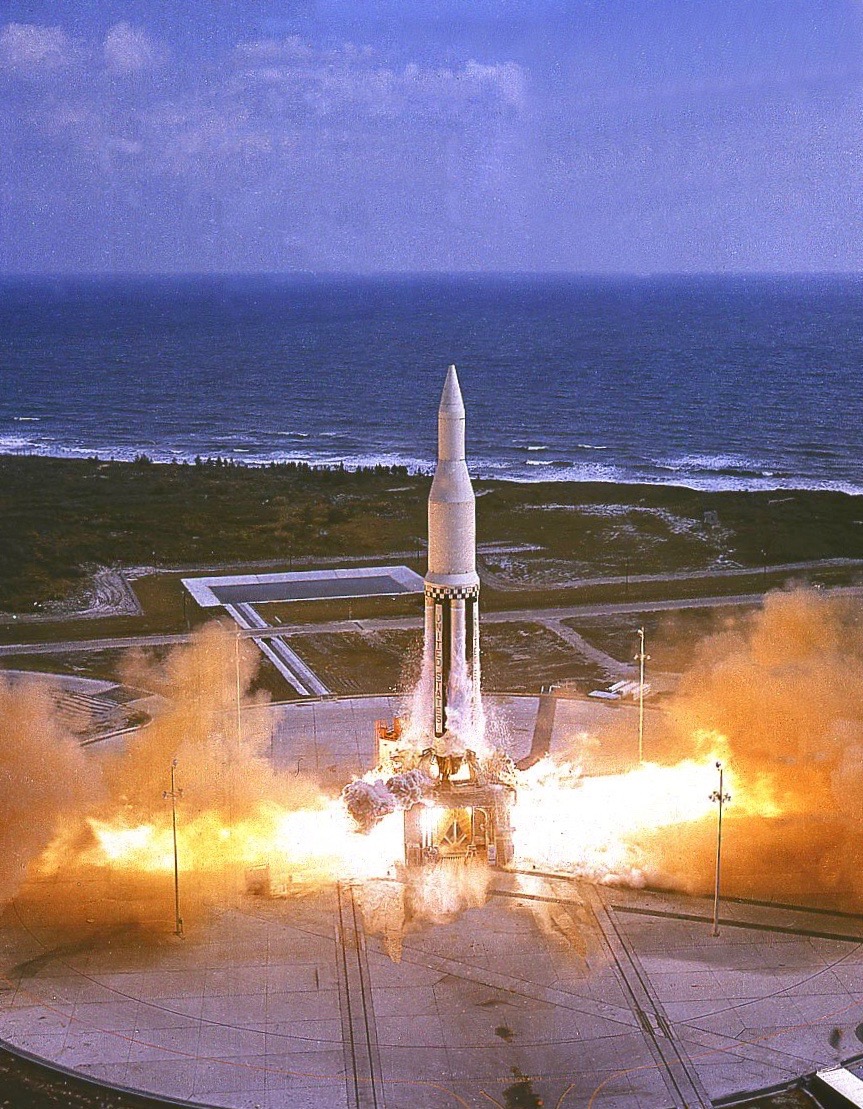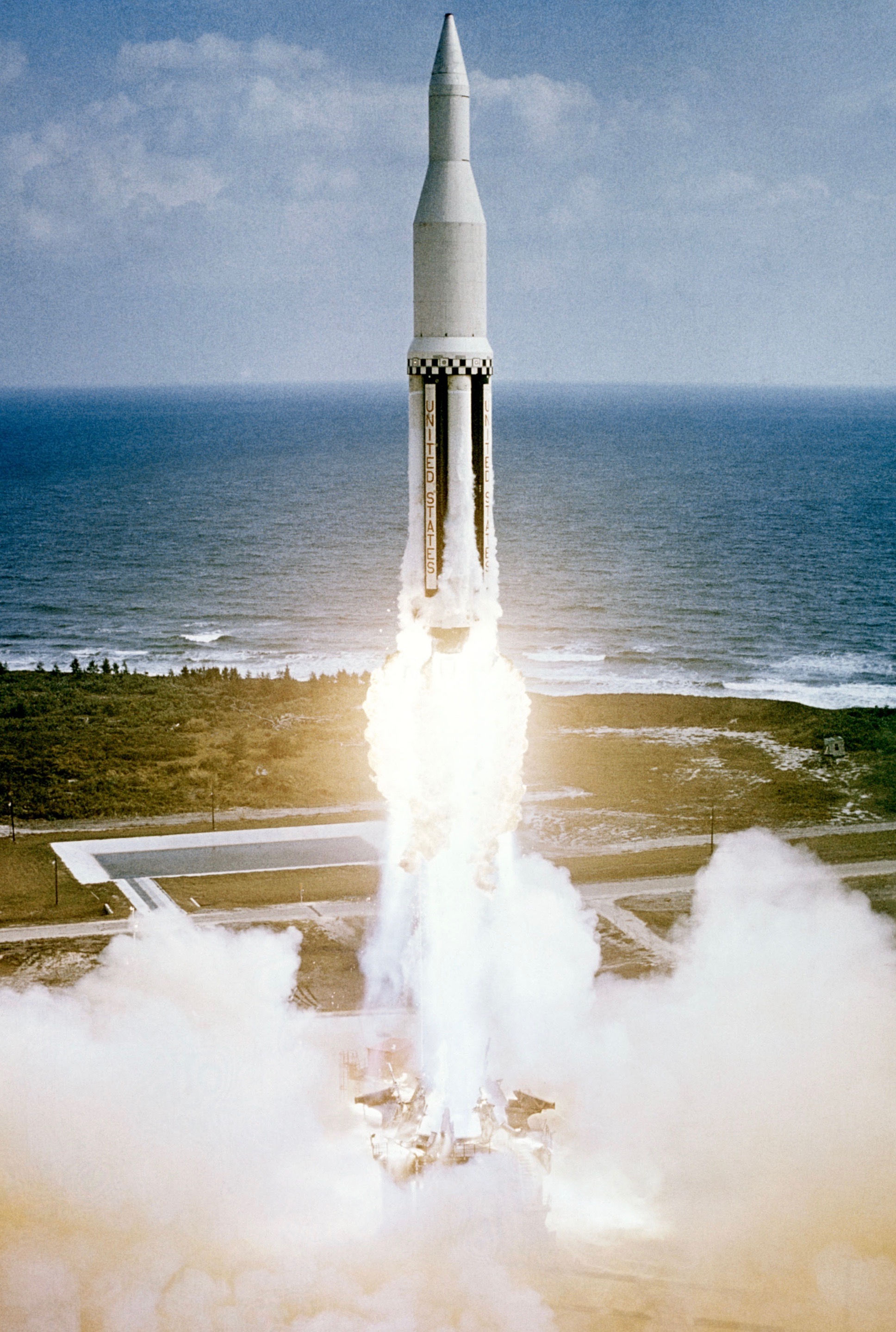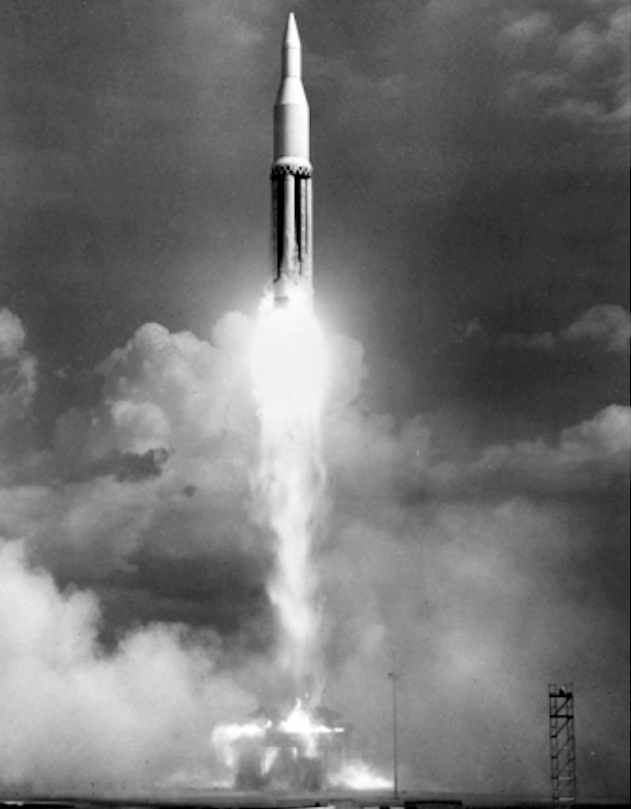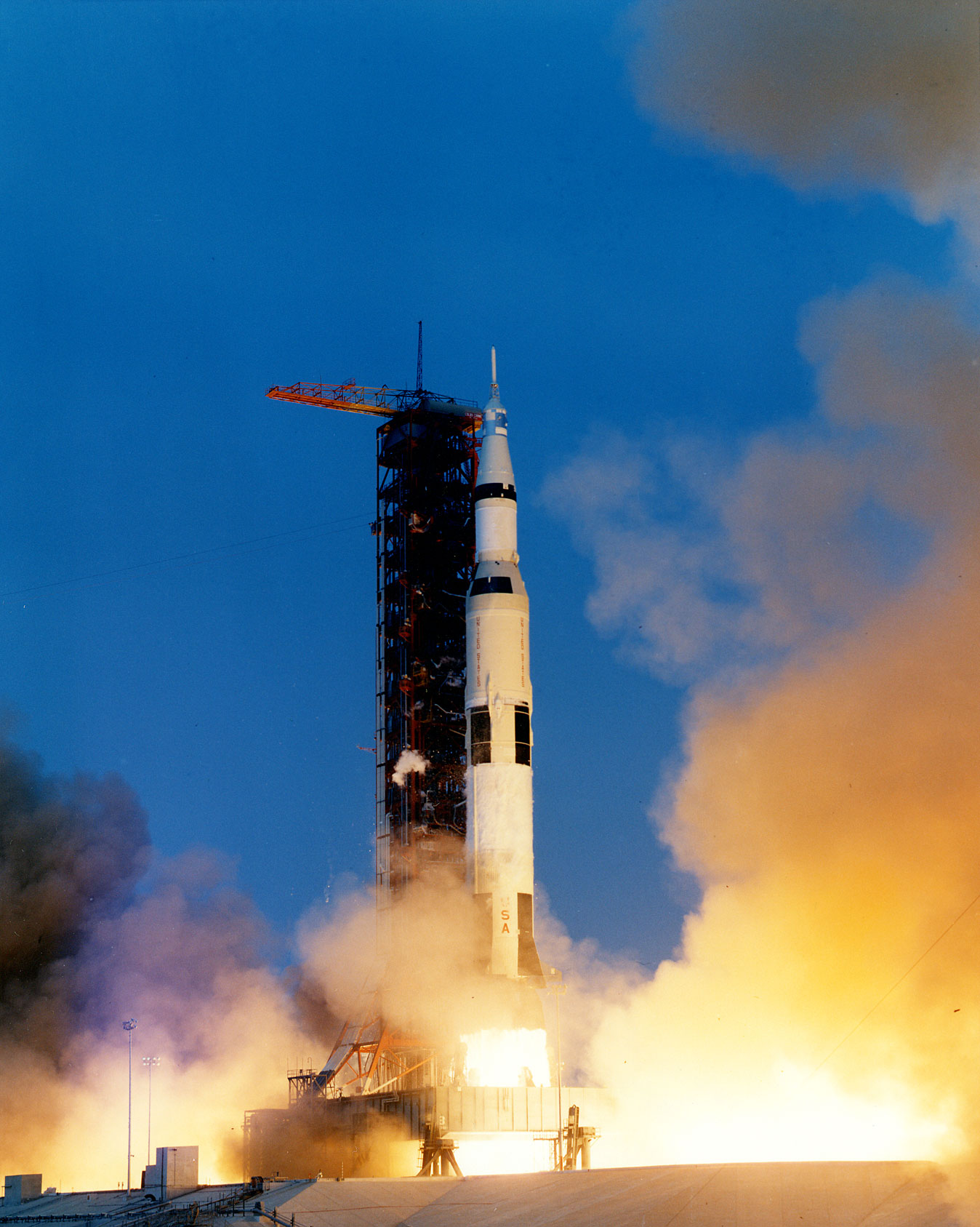
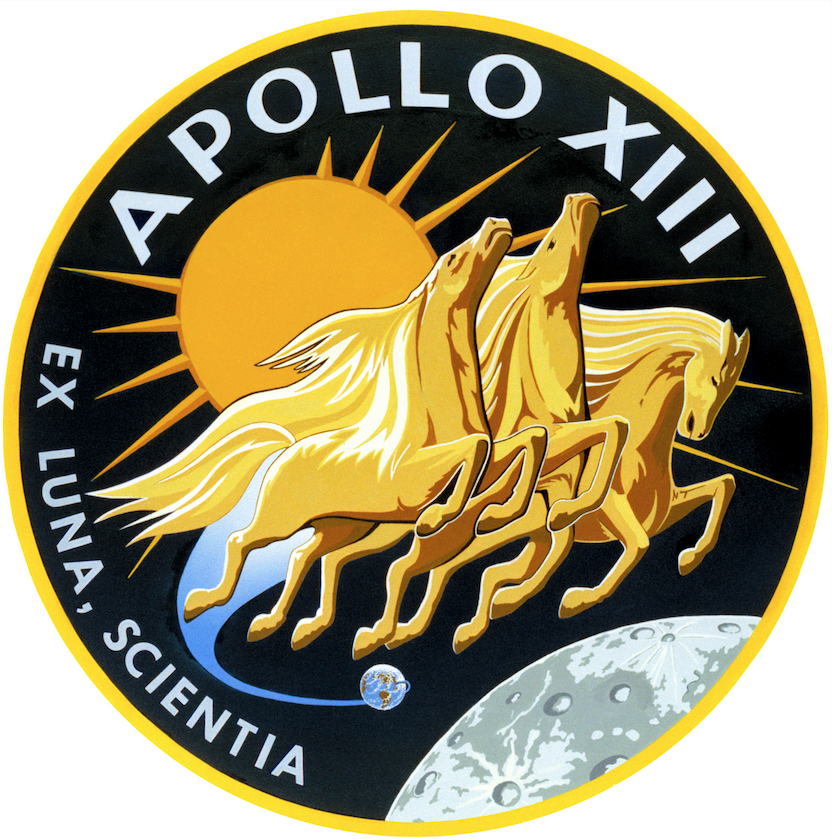 11 April 1970: At 2:13:00 p.m., Eastern Standard Time, Apollo 13 was launched from Launch Complex 39A at the Kennedy Space Center, Cape Canaveral, Florida. This mission was planned to be the third manned lunar landing. The destination was the Fra Mauro Highlands. In command was Captain James A. Lovell, Jr., United States Navy. The Command Module Pilot was John L. “Jack” Swigert, Jr. (who was originally scheduled as the backup CSM pilot, but had replaced Lieutenant Commander T. Kenneth Mattingly II, USN, just three days before launch). and the Lunar Module Pilot was Fred W. Haise, Jr., A NASA astronaut (formerly a U.S. Marine Corps and U.S. Air Force fighter pilot, test pilot and instructor).
11 April 1970: At 2:13:00 p.m., Eastern Standard Time, Apollo 13 was launched from Launch Complex 39A at the Kennedy Space Center, Cape Canaveral, Florida. This mission was planned to be the third manned lunar landing. The destination was the Fra Mauro Highlands. In command was Captain James A. Lovell, Jr., United States Navy. The Command Module Pilot was John L. “Jack” Swigert, Jr. (who was originally scheduled as the backup CSM pilot, but had replaced Lieutenant Commander T. Kenneth Mattingly II, USN, just three days before launch). and the Lunar Module Pilot was Fred W. Haise, Jr., A NASA astronaut (formerly a U.S. Marine Corps and U.S. Air Force fighter pilot, test pilot and instructor).
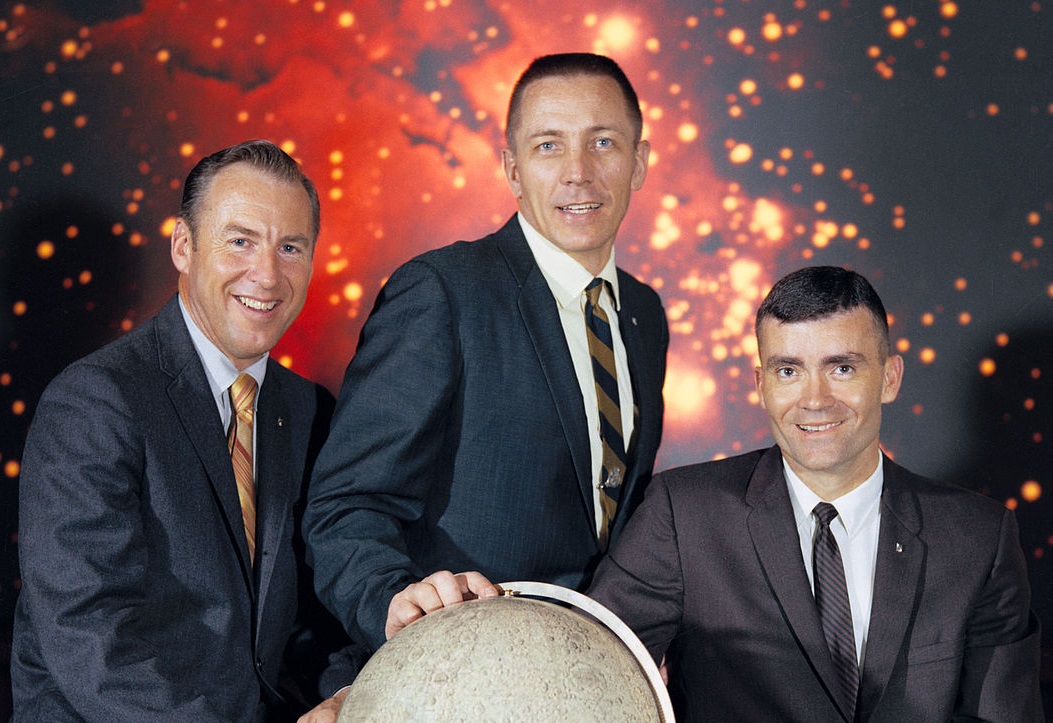
The crew change had been made because it was believed that Ken Mattingly had been exposed to measles and NASA administrators did not want to risk that he might become ill during the flight.
The F-1 engines of the S-IC first stage shut down at 2 minutes, 43.6 seconds. After being jettisoned, the first stage continued on a ballistic trajectory and fell into the Atlantic Ocean at 000:09:52.64, 355.3 nautical miles (408.9 statute miles/658.0 kilometers) from the launch site.
At T + 000:05:30.64, while accelerating toward Earth orbit, the center J-2 engine on the Saturn S-II second stage shut down 2 minutes, 12.36 seconds early, which required the other four engines to increase their burn by 34.53 seconds, and the S-IVB third stage engine had to burn 9 seconds seconds longer than planned to achieve the necessary velocity for orbital insertion. The second stage traveled 2,452.6 nautical miles (2,822.4 statute miles/4,542.2 kilometers) before hitting the Atlantic’s surface at T + 20 minutes, 58.1 seconds.
Following the Trans Lunar Injection maneuver, Apollo 13’s S-IVB third stage was intentionally crashed into the lunar surface. The impact took place at 00:09:41 UTC, 15 April. The stage was traveling at 5,600 miles per hour (9,012 kilometers per hour). The energy at impact was equivalent to the explosion 7.7 tons of TNT.
The Apollo 13 mission did not go as planned. An explosion inside the service module was a very near disaster, and the lunar landing had to be aborted. Returning the three astronauts safely to Earth became the primary task.
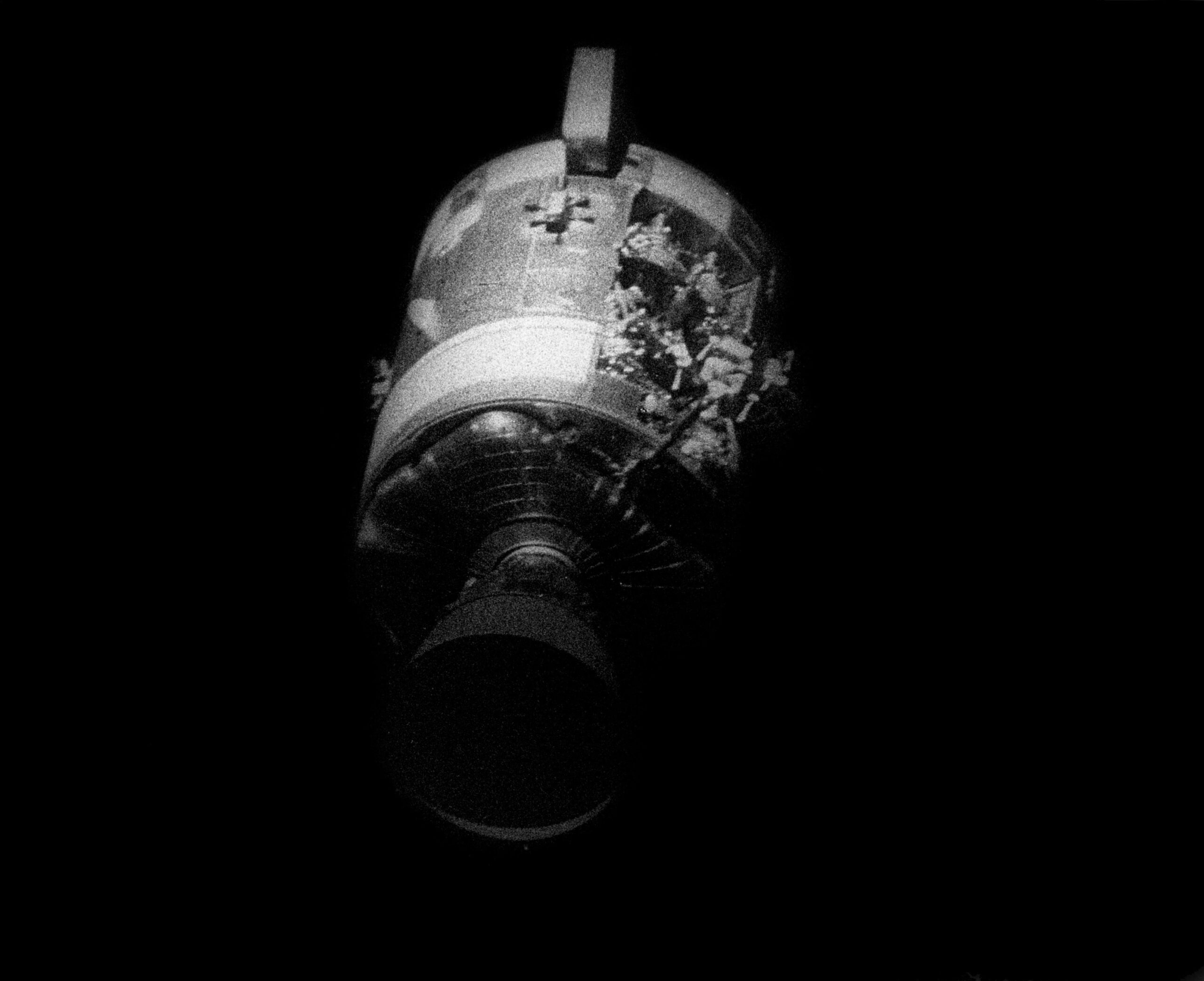
![]() The Saturn V rocket was a three-stage, liquid-fueled heavy launch vehicle. Fully assembled with the Apollo Command and Service Module, it stood 363 feet (110.642 meters) tall. The first and second stages were 33 feet (10.058 meters) in diameter. Fully loaded and fueled the rocket weighed 6,200,000 pounds (2,948,350 kilograms). It could lift a payload of 260,000 pounds (117,934 kilograms) to Low Earth Orbit.
The Saturn V rocket was a three-stage, liquid-fueled heavy launch vehicle. Fully assembled with the Apollo Command and Service Module, it stood 363 feet (110.642 meters) tall. The first and second stages were 33 feet (10.058 meters) in diameter. Fully loaded and fueled the rocket weighed 6,200,000 pounds (2,948,350 kilograms). It could lift a payload of 260,000 pounds (117,934 kilograms) to Low Earth Orbit.
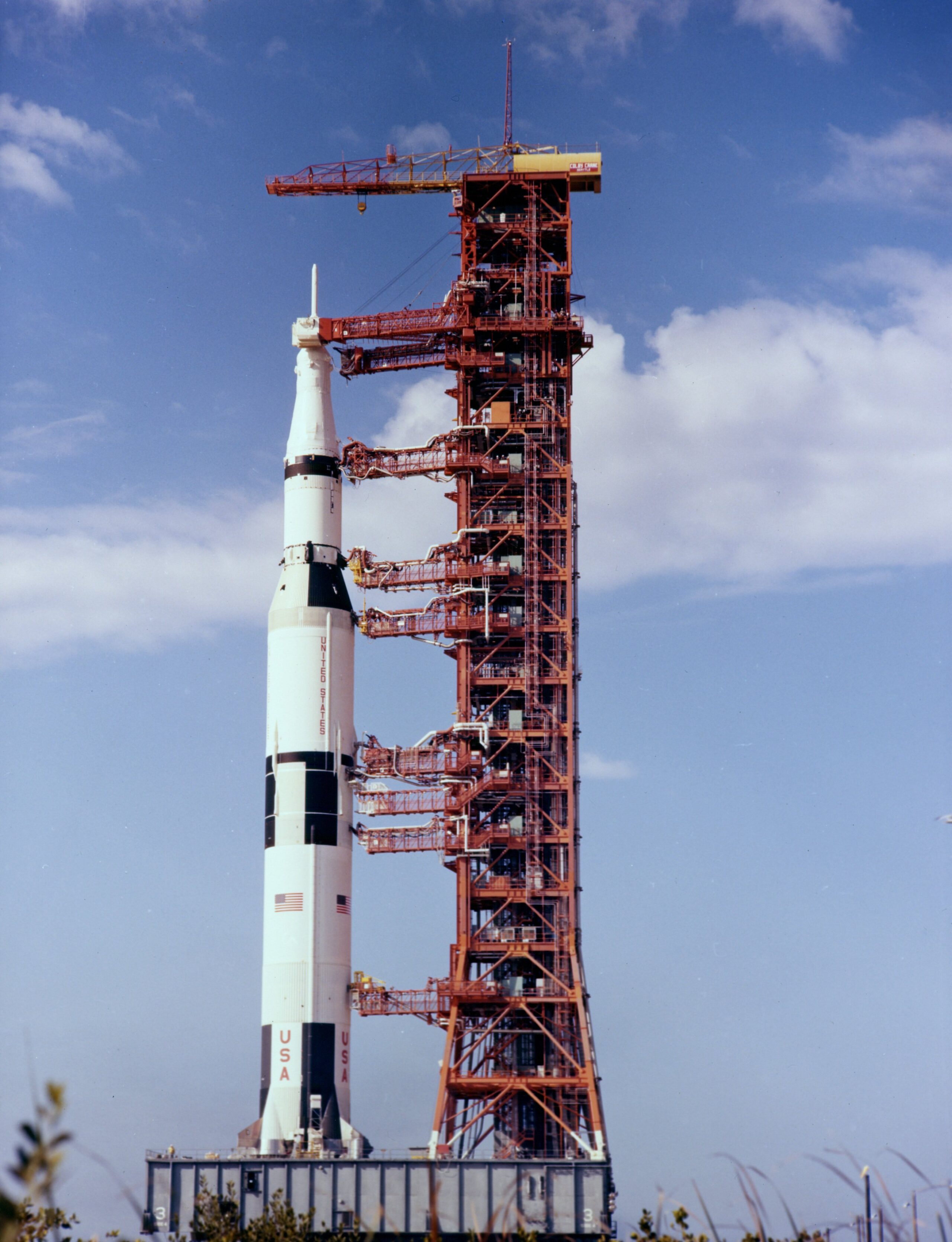
![]() The first stage was designated S-IC. It was designed to lift the entire rocket to an altitude of 220,000 feet (67,056 meters) and accelerate to a speed of more than 5,100 miles per hour (8,280 kilometers per hour). The S-IC stage was built by Boeing at the Michoud Assembly Facility, New Orleans, Louisiana. It was 138 feet (42.062 meters) tall and had an empty weight of 290,000 pounds (131,542 kilograms). Fully fueled with 203,400 gallons (770,000 liters) of RP-1 and 318,065 gallons (1,204,000 liters) of liquid oxygen, the stage weighed 5,100,000 pounds (2,131,322 kilograms). It was propelled by five Rocketdyne F-1 engines, producing 1,522,000 pounds of thrust, each, for a total of 7,610,000 pounds of thrust at Sea Level. These engines were ignited seven seconds prior to lift off and the outer four burned for 168 seconds. The center engine was shut down after 142 seconds to reduce the rate of acceleration. The F-1 engines were built by the Rocketdyne Division of North American Aviation at Canoga Park, California.
The first stage was designated S-IC. It was designed to lift the entire rocket to an altitude of 220,000 feet (67,056 meters) and accelerate to a speed of more than 5,100 miles per hour (8,280 kilometers per hour). The S-IC stage was built by Boeing at the Michoud Assembly Facility, New Orleans, Louisiana. It was 138 feet (42.062 meters) tall and had an empty weight of 290,000 pounds (131,542 kilograms). Fully fueled with 203,400 gallons (770,000 liters) of RP-1 and 318,065 gallons (1,204,000 liters) of liquid oxygen, the stage weighed 5,100,000 pounds (2,131,322 kilograms). It was propelled by five Rocketdyne F-1 engines, producing 1,522,000 pounds of thrust, each, for a total of 7,610,000 pounds of thrust at Sea Level. These engines were ignited seven seconds prior to lift off and the outer four burned for 168 seconds. The center engine was shut down after 142 seconds to reduce the rate of acceleration. The F-1 engines were built by the Rocketdyne Division of North American Aviation at Canoga Park, California.
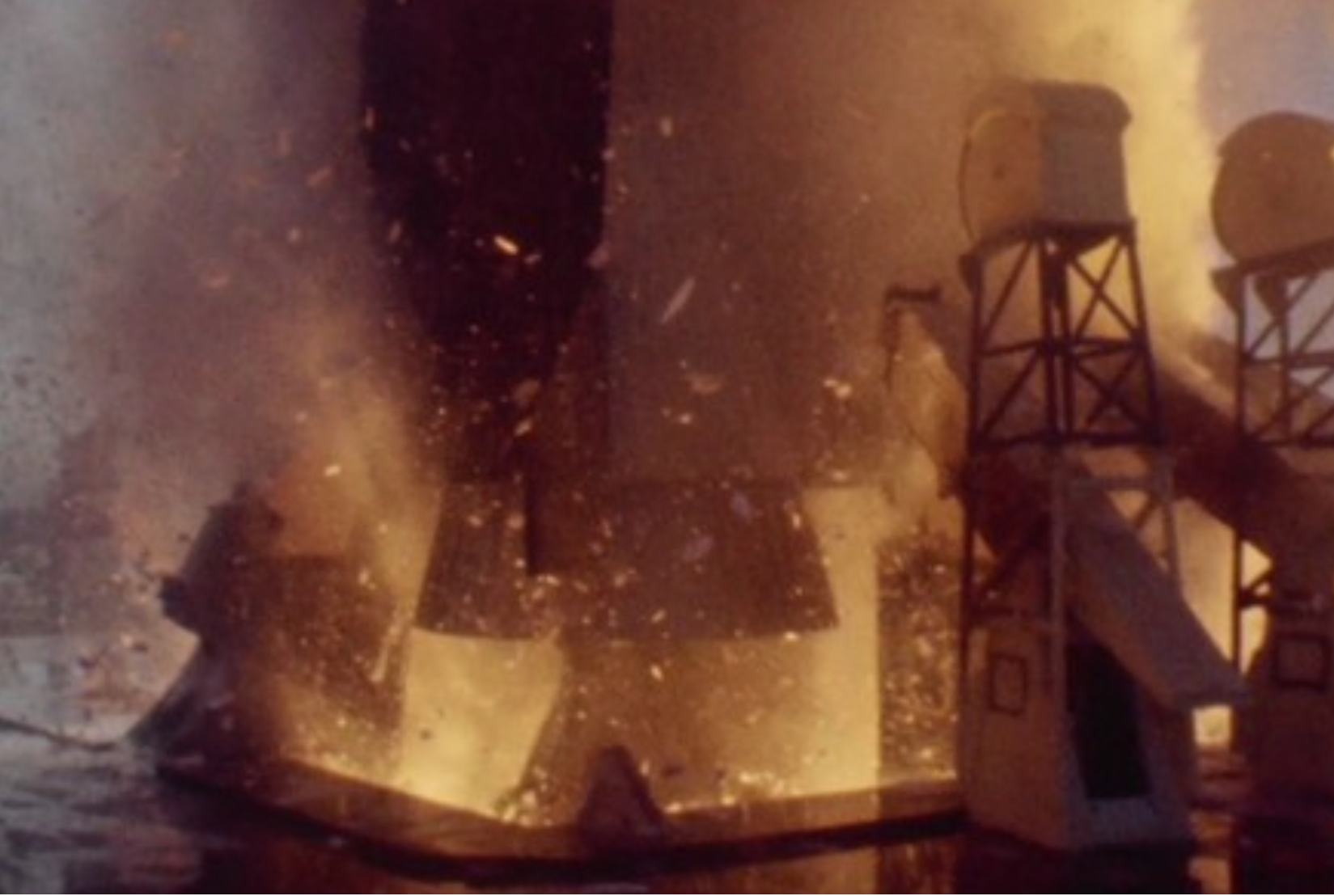
 The S-II second stage was built by North American Aviation at Seal Beach, California. It was 81 feet, 7 inches (24.87 meters) tall and had the same diameter as the first stage. The second stage weighed 80,000 pounds (36,000 kilograms) empty and 1,060,000 pounds loaded. The propellant for the S-II was liquid hydrogen and liquid oxygen. The stage was powered by five Rocketdyne J-2 engines, also built at Canoga Park. Each engine produced 232,250 pounds of thrust, and combined, 1,161,250 pounds of thrust.
The S-II second stage was built by North American Aviation at Seal Beach, California. It was 81 feet, 7 inches (24.87 meters) tall and had the same diameter as the first stage. The second stage weighed 80,000 pounds (36,000 kilograms) empty and 1,060,000 pounds loaded. The propellant for the S-II was liquid hydrogen and liquid oxygen. The stage was powered by five Rocketdyne J-2 engines, also built at Canoga Park. Each engine produced 232,250 pounds of thrust, and combined, 1,161,250 pounds of thrust.
 The Saturn V third stage was designated S-IVB. It was built by McDonnell Douglas Astronautics Company at Huntington Beach, California. The S-IVB was 58 feet, 7 inches (17.86 meters) tall with a diameter of 21 feet, 8 inches (6.604 meters). It had a dry weight of 23,000 pounds (10,000 kilograms) and fully fueled weighed 262,000 pounds. The third stage had one J-2 engine and also used liquid hydrogen and liquid oxygen for propellant. The S-IVB would place the Command and Service Module into Low Earth Orbit, then, when all was ready, the J-2 would be restarted for the Trans Lunar Injection.
The Saturn V third stage was designated S-IVB. It was built by McDonnell Douglas Astronautics Company at Huntington Beach, California. The S-IVB was 58 feet, 7 inches (17.86 meters) tall with a diameter of 21 feet, 8 inches (6.604 meters). It had a dry weight of 23,000 pounds (10,000 kilograms) and fully fueled weighed 262,000 pounds. The third stage had one J-2 engine and also used liquid hydrogen and liquid oxygen for propellant. The S-IVB would place the Command and Service Module into Low Earth Orbit, then, when all was ready, the J-2 would be restarted for the Trans Lunar Injection.
Eighteen Saturn V rockets were built. They were the most powerful machines ever built by man.
© 2019, Bryan R. Swopes
